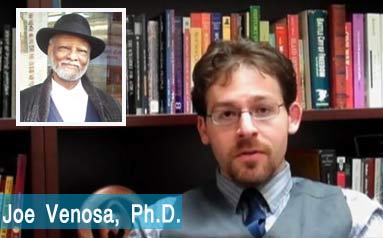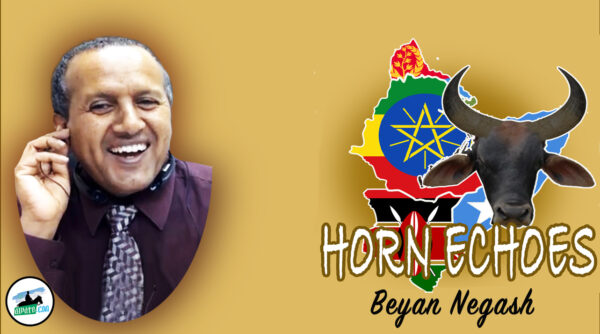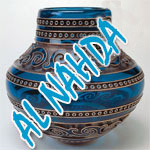Book Review: Paths To A Nation

Paths To The Nation: Islam, Community, and Early Nationalism in Eritrea, 1941-1961, By Joseph L. Venos. Review By Bereket Habte Selassie the University of North Carolina at Chapel Hill
Introduction
As I read this piece of work, with great interest, I was struck by two significant facts. First, of the top four leaders of Eritrean national movement/struggle, generally considered to be founding fathers of the Eritrean nation—Ibrahim Sultan Ali, Woldeab Woldemariam, Abdulkadir Kebire, and Idris Mohammed Adam—three are Muslims.
Second, to the generation of Eritreans who came of age during the armed phase of the Eritrean struggle for independence (1961-1991), mostly schooled in a secular ethos, religious identification was consigned, at least rhetorically, to a subordinate place—ceding first place to nationalism. As the work under review illustrates, that did not mean that people lost their religious sentiments or stopped practicing their religion; far from it. What it did mean is that the pioneers of Eritrean national movement, being keenly aware of Eritrean history and demography, clearly placed emphasis on the common agenda of a united struggle under a nationalist banner. This fact was epitomized by the story, described in this work, in which Christian and Muslim leaders met for a common meal at the home of a leading Muslim businessman and alternately ate chicken, one chicken slaughtered and blessed by a Muslim, and another chicken slaughtered and blessed by a Christian.
These leaders knew that in the historical and social context of Eritrea (and Ethiopia), what they were doing was nothing short of revolutionary. It went against the grain; it changed an ingrained tradition of separation between Christians and Muslims, separation that extends to meals and other interfaith social interaction, including more seriously, prohibition of interfaith marriage. The origin of such separation, being peculiarly Ethiopian (and later Eritrean) prohibition, goes back to the fifteenth century. [1]. The common meal in which the pioneers participated, breaking a long-held taboo, symbolized the determination of the founding fathers to put nationalist interests above everything else. It sent a clear message to the adherents of the two Abrahamic religions that Eritreans needed to develop a common nationalist consciousness transcending (not replacing) religious sentiments. It is also important to consider this story of a common struggle of Eritreans against Ethiopian occupation in a historical context in which a Christian Emperor backed by the Ethiopian Orthodox Christian Church was at the head of a government. A complicating fact in this respect is that half of Eritreans are adherents of the same Orthodox faith, while half of them are Muslims.
History, Demography and Nationalism in Eritrea
The symbolic common meal mentioned above eventually became a common practice among Eritrean freedom fighters. Indeed, we find that the separate eating of Muslims and Christians only existed in Ethiopia and highland Eritrea. Eritreans who had lived in Egypt and Sudan, including those who became freedom fighters, were not faced by the taboo. Christians ate meals prepared by Muslims and vice versa. But among the vast majority of Eritrean Christians and Muslims not impacted by the secular/revolutionary ethos, the old taboos and prohibitions continued. And Ethiopian government propaganda repeatedly defined the freedom fighters as agents of Arab interests. To traditional Christians unaffected by the secular national ethos “Arab” meant anti-Christian.
Eritrean nationalism is based on the creation, in 1890, of a territory as an Italian colonial state. Like the rest of colonial Africa, its identity as a nation-state was defined by the boundaries created after Italy declared it as a colony upon occupying the whole territory, giving it a new name—Eritrea. Enclosed within this artificially fixed boundary are nine ethno-linguistic groups, equally divided between Christians and Muslims. This historical fact of colonially created nation states in the African continent, defined by artificial boundaries, was confirmed in the Cairo Resolution of the OAU passed in 1964. The political fact of an artificially created nation state was buttressed in all cases by industrial development with the concomitant building of infrastructure reinforcing the rapidly changing economic and social landscape guided by the economic objectives of the colonizing state. An important factor in the construction of nationalism is the rapid expansion of literacy and the development of a mass newspaper readership, or radio listening audience. In this process of colonial national construction language assumes a critical role as a means of communication with a national leadership using it skillfully. Hence the importance of language in modern political discourse, and the fact that there is much debate on language in national politics. And Eritrea is no exception to the rule in this respect.
A matter of critical relevance in the case of Eritrean national politics is the fact that Eritrean Muslims, with their primary school education obtained in in Qur’anic schools, claim Arabic as their language of education and communication. Thus, as Venosa’s work amply demonstrates, leaders like Ibrahim Sultan Ali fought tooth and nail for the preservation and promotion of what they called Islamic resources and institutions. They were referring, of course, to the Holy Qur’an as well as texts and practices based on it, including all the religious and cultural heritage that they perceived to be under attack by the rapidly advancing imperial Ethiopian hegemonic project. In such struggle, they were not interested in relying only on the international basis of the Ethiopian-Eritrean federation under which Eritrean autonomy was guaranteed. The internationalization of Eritrea’s case for legitimate autonomy was not sufficient for Ibrahim Sultan and his colleagues of the Muslim League. As Venosa ably demonstrates, the Muslim League went out of its way in emphasizing the critical need of safeguarding Islamic resources and institutions in the fight for Eritrean self determination and survival as a national entity. In other words, the League leaders, and especially Ibrahim Sultan considered Islamic resources and institutions as a bulwark in gaining and maintaining Eritrean self determination.
Did such a stand pose a threat to the necessary coexistence or cooperation between Muslims and Christians in Eritrea? Could it be a double-edged sword?
We go back to that symbolic dinner over chicken, and to the development during the colonial era of shared experience, of a common sense of nationhood—of Eritrean nationalism. Ibrahim Sultan and his comrades of the Muslim League were men who had such shared experience with Christian leaders like Woldeab Woldemariam. Venosa brings out this fact very clearly. Imperial Ethiopia’s hegemonic project heavily counted on the Christian segment of the Eritrean population to divide and conquer. The division of Eritreans into the unionists predominantly Christian, and those in favor of independence predominantly Muslims but with a significant Christian members posed a challenge to the supporters of independence. To obviate the problem that this posed independence leaders from the two sides agreed to establish an Independence Bloc linking Christians and Muslims, which was a historic response to the challenge.
All this and more is narrated by this excellent history of Eritrea’s quest for independence against heavy odds—against a country lead by a world-renowned Christian Emperor generally favored by Western powers led by the United States of America.
The Value of Venosa’s Work
In my considered opinion, Paths Toward the Nation is an excellent scholarly work that is worth publishing. The aim of the manuscript is indicated in the sub-title—Islam, Community, and Early Nationalism in Eritrea. In a well-researched and written narrative of the evolution and struggle for survival of Eritrean nationalism, the author seeks to provide the historical grounding of Eritrean nationalism. In that narrative, the role of Islam and Islamic institutions and resources in the seeding, growth and protection of that nationalism against a critical challenges posed by the hegemonic project of the Ethiopian empire-state led by a famous and powerful Emperor is clearly and cogently discussed. In the introductory section of the work, the author states:
“By illustrating how the Islamic religion and Muslim community activism was put in the service of Eritrea’s independence movement, this book also explores the often-overlooked relationship between religious identity and nationalism in one particular area of the Horn of Africa.” In other words, while the narrative is focused on one particular corner of the world (the Horn of Africa), Eritrea’s story of struggle for national self determination represents a global trend in which a particular identity—religious identity is put at the service of a people’s right to self determination. In such a quest, the power of the idea of freedom prevailed over sectarian division (be it based on ethic or religious ground). The triumph of the idea over sectarian division, a division that was encouraged and fostered by Ethiopia’s hegemonic project, represents a ringing testimony to the power of the idea and of nationalism as the organizing force of that idea. This is indeed one of the lessons of Venosa’s work. For the idea, like all ideas, may be regarded as “self-evident (to borrow the phrase of America’s founding fathers), but it is not self-enforcing. It requires leaders who believe in it to the point of staking their lives to ensure its triumph. Such were the leaders of the Eritrean Muslim League, one of whose leading members (Abdulkadir Kebire) was assassinated by agents of the Ethiopian government. Much of the work is devoted to describing the role of the Muslim League and its principal leader like Ibrahim Sultan Ali, as well as his Christian comrade in arms, Woldeab Woldemariam.
In this respect, Venosa’s work represents a significant contribution to the study of Eritrea’ national struggle for independence by delving into a detailed analysis of the role of Islam’s struggle to maintain its identity as a religious and national force. Islamic identity thus directly and indirectly made a tremendous contribution to the success of maintaining Eritrea’s national identity and autonomy at a time when Ethiopia’s hegemonic project had relied on the division of Muslims and Christians in Eritrea’s demographic make-up. In thus bringing out and laying emphasis on Islam’s role the message of the book is loud and clear and will play a chastening role among Eritrean Christians who might not have thought of Islam’s role in that sense. The manuscript is thus addressed as much to Muslims who are proud of the contributions made by their parents’ generation to Eritrea’ independence, but also to Christians who have an equal need to be proud of their fellow citizens who happen to be adherents of a religion different than their own. In brief the manuscript when published should have a universal national appeal.
Over all, Eritreans in the post-liberation period are faced with the challenge of building a nation comprising the two principal components—Christians and Muslims. The primary value of the manuscript under review is that it puts into relief the foundations of a national ethos under which Muslim leaders engaged in the resistance against an oppressive alien occupation put Islamic institutions and resources at the disposal not only of their fellow Muslims, but also directly and indirectly at the disposal of their Christian fellow citizens. At a time when some members of the two sides among the current leaders are facing the challenge of confusion and uncertainty, the example of Ibrahim Sultan and Woldedab Woldemariam stands as a monument to remind them and all Eritreans to focus on the bottom line of a common interest and shared destiny. The legacy of the pioneers, described in this compelling story is to remind Eritreans of the legacy of the liberation struggle laying stress on what unites Eritreans under a common citizenship obtained as a result of common sacrifice.
In the current discourse among Eritreans in the Diaspora, the historic division among the freedom fighters in which a splinter group breaking away from the Eritrean Liberation Front (ELF) formed what eventually became the Eritrean People’s Liberation Front (EPLF), some adherents of the ELF claim that the leaders of the EPLF sought to justify their decision to form a separate organization in nationalist terms, were actually motivated by personal ambition. Their Manifesto, Nihnan E’lamanan (We and Our Objective) was, on the face of it, the critics contend, nationalist, when in fact it was aimed at arousing the highland Christians to confront and challenge the Muslim-dominated ELF. In promoting their separatist agenda, the EPLF leaders accused the ELF leaders of practicing Islamist-based politics in which Christians were targeted for attack and in some cases for liquidation. The claims and counter-claims—the accusations and counter-accusation—continued even after the defeat and withdrawal of the ELF from the field in 1981. The ghost of the past of division and recrimination haunts Eritrean politics even today albeit in somewhat attenuated form and sense.
Is religion the main axis of division among Eritreans? If so, does a study like the work under review contribute to its rationalization and bringing it under control?
Conclusion
As noted at the outset, the pioneers of Eritrean nationalism were both Christian and Muslim. The principal value of Joseph Venosa’s manuscript is to provide a well-researched and brilliantly articulated narrative of the role of Muslim leaders in the use of Islamic resources and institutions in the fight to assert, preserve and promote Eritrean self determination against the onslaught of imperial Ethiopian hegemonic project. The manuscript is well-researched. The bibliography lists over ninety books in addition to periodicals and on-line sources. It also refers to several interviews of scholars and political actors many of whom took part in the struggle for independence.
Thus, I have no hesitation in commending Venosa’s work to the highest consideration of the publishers of Ohio University Press for publication.




Awate Forum